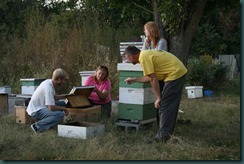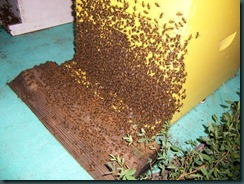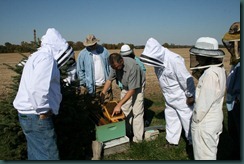Terbaca sebuah post yang amat menyentuh sanubari ini. Tulisan salah seorang penggerak dakwah daripada sayap akhwat. Menceritakan tentang sebuah masalah yang menjadi dilema para akhwat sedari dahulu. Yakni hal jodoh. Diri ini terpanggil untuk membicarakan soal ini. Semoga penulisan ini mampu membawa sedikit pencerahan buat kita fikirkan bersama.
Lambakan Akhwat
Seperti yang dinukilkan di dalam blog
akhwatmedic, sememangnya fenomena akhwat tidak menikah sedangkan usia semakin lanjut merupakan masalah yang sedari dahulu dialami oleh para akhwat dakwah, boleh dikatakan daripada mana-mana jemaah dakwah. Bukannya mereka ini tidak laku, namun kerana terdapat beberapa pertimbangan.
Menanti jodoh daripada kalangan ikhwah yang sefikrah. Dengan harapan dapat meneruskan perjuangan dakwah dengan lebih baik dan tidak terganggu. Kalau bernikah dengan lelaki yang bukan sefikrah, mereka tidak tahu bagaimana bentuk perjuangan yang kita perjuangkan. Bagaimana masa akhwat kita perlu pergunakan. Usrahnya, programnya, dan lain-lain. Mereka sukar untuk faham, sehingga gerakkan kita bakal terhambat. Apatah lagi jika pasangannya tidak ditarbiyah langsung. Jauh lebih huru-hara.
Lalu wujudlah keadaan seperti ‘resume’ permohonan nikah daripada pihak akhwat berganda-ganda daripada daripada ‘resume’ ikhwah. Sepengetahuan saya, pernah resume akhwat yang diterima adalah 18, tetapi di ikhwah cuma 4!!!
Dan juga kes-kes akhwat muda lebih cepat naik namanya untuk dijodohkan berbanding akhwat yang berusia.
Punca-Punca
Fenomena ini akan terus berlaku. Ini adalah sesuatu fakta yang perlu kita terima. Faktor-faktornya terkait rapat dengan keadaan umat manusia masa kini, terutamanya Umat Islam di Malaysia.
Masalah kebenaran keluarga
Kebiasaannya wanita lebih mudah mendapat kebenaran berbanding lelaki. Untuk lelaki lebih banyak pertimbangan yang dikenakan oleh keluarga. Perlu tunggu habis kuliah dahulu, tunggu ada kerja dahulu, tunggu bermacam itu dan ini lagi. Namun untuk wanita, biasanya lebih mudah untuk dibenarkan menikah. Bukan mereka yang perlu menghidupi keluarga, tetapi mereka yang akan dihidupi.
Wanita lebih ramai daripada lelaki
Statistik menunjukkan bilangan wanita sering melebihi bilangan lelaki di setiap peringkat.
Fenomena ini berlaku pada peringkat sekolah menengah lagi. Jika diamati Laporan Rancangan Malaysia ke-10 (RM Ke-10), pada tahun 2008 enrolmen lepasan sekolah menengah memang dikuasai pelajar wanita. Statistik menunjukkan 65.9 peratus enrolmen pelajar ialah wanita manakala lelaki hanya 34.1 peratus.
RM Ke-10 melaporkan, pada 2008 jumlah pemegang ijazah pertama dikuasai wanita iaitu 62.3 peratus berbanding lelaki 37.7 peratus. Pencapaian itu diperkukuhkan lagi dengan 52.7 peratus pemegang ijazah sarjana adalah wanita manakala lelaki 47.3 peratus.
Populasi wanita di dunia melebihi populasi lelaki. Di Amerika Syarikat, wanita melebihi lelaki sebanyak 7.8 juta. New York sahaja mempunyai jumlah wanita yang melebihi lelaki sebanyak 1 juta, dan daripada populasi lelaki yang berada di New York, 1/3 merupakan homoseksual. Amerika Syarikat secara keseluruhannya mempunyai lebih daripada 25 juta homoseksual dan lesbian. Ini bermakna golongan ini tidak berminat untuk mengahwini wanita. Wanita di Great Britain melebihi lelaki sebanyak 4 juta. Wanita Jerman melebihi lelaki sebanyak 5 juta. Wanita Rusia pula, melebihi lelaki sebanyak 9 juta. Hanya Tuhan sahaja yang tahu jumlah wanita di seluruh dunia yang melebihi jumlah lelaki.
Secara logiknya, jika populasi wanita lebih ramai daripada lelaki pada suatu-suatu masa, maka bilangan wanita yang akan ditarbiyah berbanding lelaki pasti akan lebih besar.
Solusi
Solusi yang diberikan oleh Chayadi Takriyawan di dalam bukunya Di Jalan Dakwah Aku Menikah sungguh menarik dan baik untuk diaplikasikan. Ikhwah-ikhwah yang telah mendapat kebenaran menikah ini sepatutnya mengedepankan keperluan dakwah yakni membantu akhwat-akhwat berusia yang telah lama menunggu ini berbanding memilih mengikut keinginan diri. Sungguh itu adalah sebuah pilhan yang baik dan membuktikan cintanya kepada pasangan bukan didasari rupa paras mahupun pandangan nafsu, tetapi atas dasar cinta kepada dakwah dan islam.
Namun maaf saya katakan, solusi itu tidak mampu menyelesaikan permasalahan pokok, bahkan permasalahan-permasalahan lain yang dihadapi kita sekarang, seperti yang dibincangkan di atas.
Biarpun ikhwah-ikhwah sanggup menikahi akhwat yang lebih senior, jarang sekali keluarganya membenarkan. Biarpun dapat, tetap sahaja nisbah bilangan akhwat kepada ikhwah masih berganda banyaknya. Lambakan akhwat masih akan berlaku.
Di dalam Islam ada pemecah solusi yang dibenarkan. Pemecahan solusi yang merupakan sebuah sunnah. Apakah ia?
Dan jika kamu takut tidak akan dapat berlaku adil terhadap (hak-hak) perempuan yang yatim (bilamana kamu mengawininya), maka kawinilah wanita-wanita (lain) yang kamu senangi : dua, tiga atau empat. Kemudian jika kamu takut tidak akan dapat berlaku adil, maka (kawinilah) seorang saja, atau budak-budak yang kamu miliki. Yang demikian itu adalah lebih dekat kepada tidak berbuat aniaya.
[Q.S. An-Nisaa’, 4:3]
POLIGAMI
Ya, inilah solusinya. Para akhwat perlu mengikhlaskan diri untuk merelakan suami beristeri lebih daripada satu. Dan bagi akhwat yang masih belum menikah, perlu mengikhlaskan diri jika ditakdirkan menjadi isteri yang kedua, ketiga atau yang keempat. Inilah solusi rabbani yang telah digarisi oleh Allah SWT sejak lebih 1400 tahun yang lalu lagi.
Permasalahan Poligami
Poligami tentu sahaja membawa dampak buruk seandainya contoh masyarakat sekarang yang menjadi rujukan kita. Masalah ketidakadilan, ketidakharmonian rumah tangga, cemburu dan sebagainya seringkali tergambar dalam fikiran kita. Namun pernah kita lihat bagaimana contoh yang dibawa oleh baginda Rasulullah SAW dan para sahabatnya? Jika kita cuba senaraikan, hampir tiada para sahabat baginda yang tidak berpoligami. Mereka berpoligami namun mereka membuktikan mereka berjaya membentuk keluarga bahagia yang diidamkan. Dan generasi bagindalah yang kita cuba contohi dan sememangnya kita diminta untuk mencontohi.
Sesungguhnya telah ada pada (diri) Rasulullah itu suri teladan yang baik bagimu (yaitu) bagi orang yang mengharap (rahmat) Allah dan (kedatangan) hari kiamat dan dia banyak menyebut Allah.
[Q.S. Al-Ahzab, 33:21]
Ketidakadilan
Kita mungkin mengharapkan keadilan daripada pihak lelaki yang berpoligami. Dan itu sememangnya dituntut dalam Islam. Bagaimana untuk berpoligami andai tidak berlaku adil. Namun perlu diingat, kita mengharapkan keadilan daripada seorang manusia. Satu makhluk yang punya kelemahan. Sejauh manapun dia cuba berlaku adil dalam urusan nafkah dan keperluan-keperluan lainnya, masih terdapat kesukaran dalam membahagikan perasaannya kepada isteri-isternya. Kerana itulah Allah berfirman kepada Rasulullah:
Dan kamu sekali-kali tidak akan dapat berlaku adil di antara isteri-isteri(mu), walaupun kamu sangat ingin berbuat demikian, karena itu janganlah kamu terlalu cenderung (kepada yang kamu cintai), sehingga kamu biarkan yang lain terkontang-kanting. Dan jika kamu mengadakan perbaikan dan memelihara diri (dari kecurangan), maka sesungguhnya Allah Maha Pengampun lagi Maha Penyayang.
[An-Nisaa’, 4:129]
Rasulullah SAW sendiri menyatakan bahwa Khadijah RA merupakan isterinya yang paling dicintainya. Kemudiannya Aisyah. Adakah pengakuan ini merupakan sebuah ketidakadilan? Bahkan Rasulullah tetap mampu menyikapi para isterinya dengan seadil-adilnya. Malahan, Allah SWT mengakui bahawa Rasulullah SAW adalah manusia yang paling sempurna. Bagaimana pula kita sebagai manusia biasa mampu berbuat lebih baik daripada Rasulullah SAW. Malah mengikut kesepakatan ulama-ulama fiqh, keadilan yang perlu diberikan oleh seorang suami kepada para isterinya hanyalah daripada sudut zahir sahaja, seperti masa, nafkah, pendidikan/tarbiyah dan lain-lain.
Sebagai seorang yang ditarbiyah, sudah pasti seorang ikhwah itu akan cuba bersikap adil semampunya, tetapi kita perlu cuba memahami ruang lingkup keterbatasan dirinya.
Cemburu
Soal cemburu bukanlah sesuatu yang perlu diketepikan. Jika namanya manusia, cemburu itu pasti hadir. Sirah sendiri menunjukkan para isteri Rasulullah SAW sendiri berasa cemburu antara satu sama lain. Ini lumrah kehidupan berpoligami. Soalnya di sini adalah bagaimana kita mahu mengkedepankan hal yang lebih utama melainkan hal-hal perasaan semata.
Kesimpulan : Mari Berlapang Dada dan Menerima Hakikat
Saya pasti, ramai yang kurang bersetuju dengan penyelesaian yang diberi, yakni poligami. Pelbagai alasan dan argumentasi bakal dikemukakan. Namun saya ingin mengajak kita agar mengikhlaskan hati, bersikap matang dan berfikir secara objektif dan rasional, bukan emosional.
Poligami merupakan salah satu daripda syariat Allah SWT yang termaktub di dalam Al-Quran. Setiap daripada syariat Allah pasti punya hikmahnya yang tersendiri. Dan pastinya apabila syariat ini dijalani secara benar dan baik sesuai dengan keperluan dan tempatnya, psatinya hikmahnya akan tersingkap.
Allah SWT Maha Mengetahui apa yang bakal terjadi kepada umat akhir zamannya. Fenomena wanita lebih ramai daripada lelaki ini pasti punya solusinya. Dan perbahasan di atas telah menjawab permasalahannya. Tinggal kita sama ada ingin menyikapinya dengan terbuka mahupun persepsi. Hakikatnya poligami sememangnya syariat Allah SWT dan bilangan wanita sememangnya jauh lebih ramai daripada lelaki.
Saya yakin, mereka yang niatnya ikhlas dalam menegakkan agama suci ini pasti mampu membuktikan bahawa syariat Allah SWT merupakan sesuatu yang indah untuk diamalkan, dan dicontohkan kepada masyarakat. Syariat Allah ditentang kerana pembawanya yang tidak berlaku sesuai perintah-Nya. Islam seringkali ditolak kerana buruknya sikap penganutnya. Namun ia tidak akan pernah mengubah hakikat bahawa Islam itu sendiri adalah agama yang benar dan fitrah buat sekalian manusia.
Kepada ikhwah-ikhwahku, ana menyeru antum semua untuk berpoligami. Tetapi tentu, bukan tanpa mengambil kira kesan buruk yang mungkin terjadi. Sebelum melaksanakannya, kita perlulah benar-benar mengikhlaskan hati untuk melaksanakan poligami sesuai dengan sunnah Rasulullah SAW dan para sahabatnya yang mulia, dengan satu niat yang jelas. Mencari redha Allah SWT semata. Kita melakukannya demi membuktikan bahawa Islam mensyariatkan sesuatu yang baik, benar dan tepat. Kerana selama ini poligami dipandang serong kerana dilaksanakan oleh orang-orang yang tidak memahami Islam dan hanya menurut hawa nafsu semata. Masalah kemampuan sebenarnya boleh diusahakan.
Kepada akhwat-akhwatku, insya-Allah jalan penyelesaiannya ada. Tinggal sebuah pertanyaan, bagaimanakah kalian menyikapinya? Jika benar antunna bersimpati dan ingin membantu akhwat-akhwat lain, maka inilah masanya! Mari Berlapang Dada dan Menerima Hakikat!
































.jpg)





0 comments:
welcome to my blog. please write some comment about this article ^_^